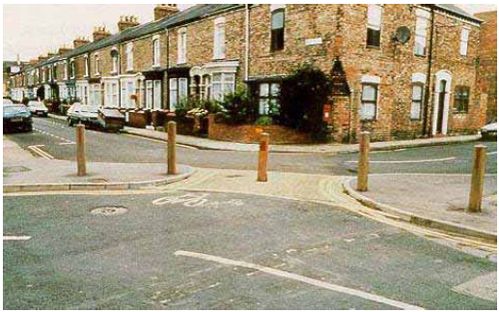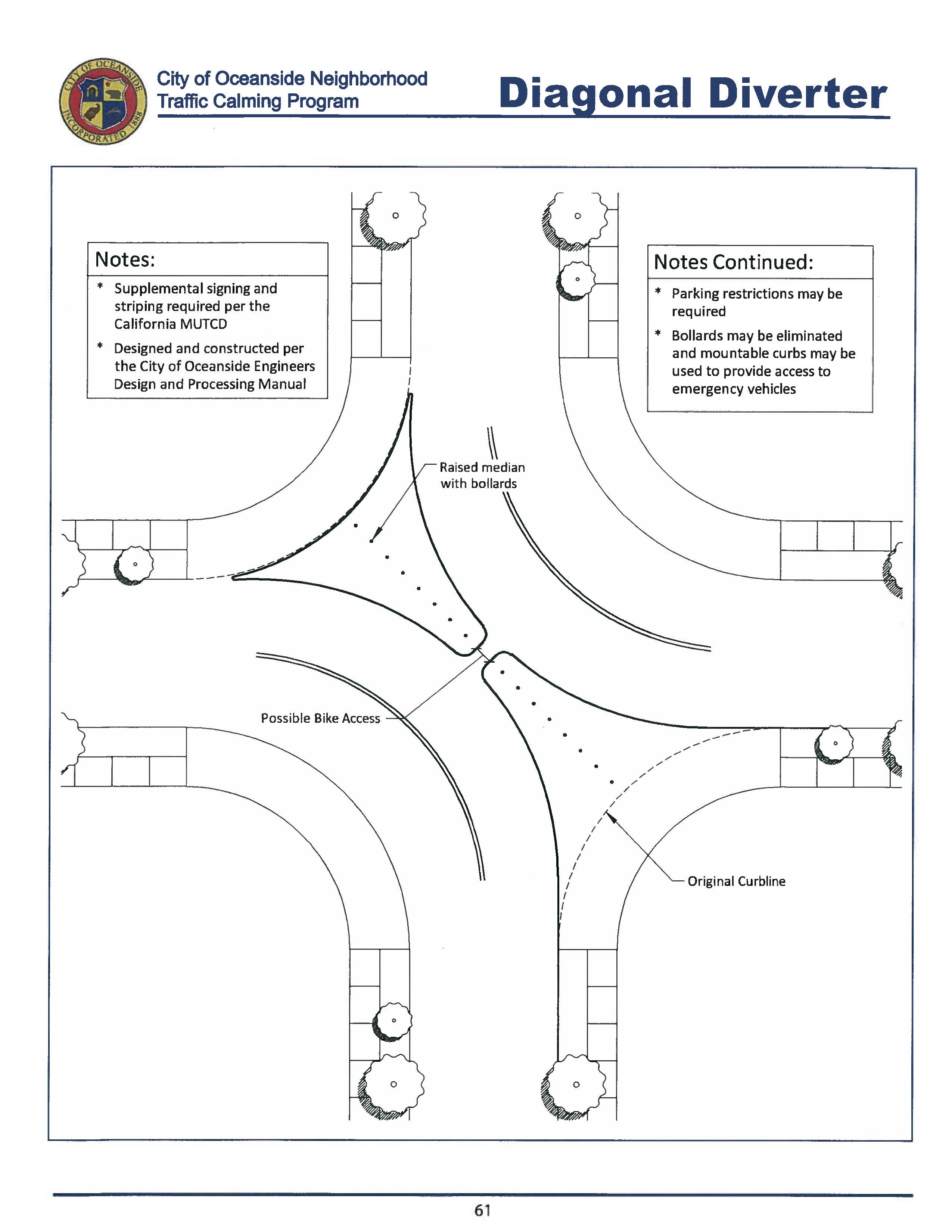Device name(s): Diagonal Diverters/Diverters/Diagonal Street Closures
Approximate Cost:$50,000 – $75,000
Definition: A diagonal diverter is either a raised median, bollards, and/or another type of treatment placed diagonally across an intersection to restrict through traffic movements. Diagonal diverters split a four-way intersection into two L-shaped turns. Bicycle and pedestrian access may be maintained by providing breaks in the treatment. The purpose of a diagonal diverter is to reduce traffic volumes along a roadway and divert traffic to adjacent streets. The use of the inverters interrupt traffic flow on a street reducing or eliminating through traffic, but maintains traffic circulation. Diverters are barriers placed across four–legged intersections, interrupting through traffic flow. These barriers can be used to create a maze–like effect in the neighborhood.
Fast Facts:
- Can be used on Local Street- yes
- Can be used on Collector- possible
- Can be used on Arterial- no
- Reduces Speed- possible
- Reduces Volume- yes
- Noise Impact- no
- Restricts Access- yes
- Bicyclist Impact- possible
- Transit Impact- yes
- Parking Impact- no
- Emergency Response Impact- yes
Advantages:
- reduces cut-through traffic
- bicycle and pedestrian access may be maintained
- eliminates through traffic
- provide areas for landscaping
- reduces traffic conflict point
- increases pedestrian safety
- can include bicycle path connection
Disadvantages:
- impacts access
- increases trip lengths
- increases traffic to adjacent streets
- may inconvenience residents trying to access their property
- may inhibit access by emergency vehicles
- may divert through traffic to other local street
- increases response time for emergency vehicles
- vehicle can turn it higher speeds because there is no opposing traffic
Criteria/Application(s):
- The purpose of this type of closure is to force traffic back onto the arterial roads around the neighborhood.

